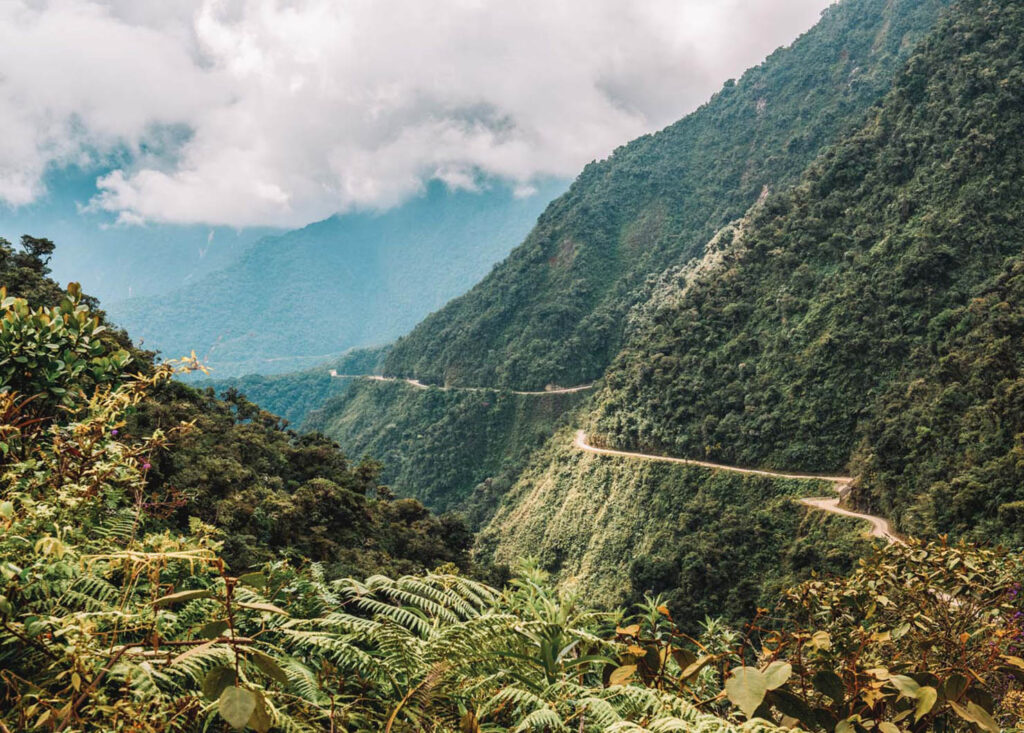North Yungas Road: The World’s Most Dangerous Road
The road to madness, the road of death, the road with no guardrails – all these phrases are used to describe the North Yungas Road, or the Death Road as it is more commonly known. Located in the Yungas region of the Bolivian Andes, this treacherous mountain pass is considered to be the world’s most dangerous road.
About North Yungas Road
The North Yungas Road is a 64-kilometer (40-mile) stretch of winding road that connects the cities of La Paz and Coroico. It is the only road connecting these two cities, and due to its treacherous conditions, it is often referred to as the “Road of Death” or the “Highway of Fate.”
The road is made up of single lane pathways, with no shoulder or guardrails, and is situated along steep, mountainous terrain. The steep slopes and narrow roads make it difficult for vehicles to pass each other, and the lack of guardrails means that if a vehicle veers off the road, it will likely plummet into one of the steep ravines below.
The unpredictable weather conditions, including fog, mist, rain, and snow, make it even more dangerous. In addition, the road is plagued with landslides and falling rocks, further increasing the risk of an accident.
History of the Death Road
The North Yungas Road has become notorious for its high number of fatal accidents. In 1995, it was estimated that more than 300 people lost their lives on the road every year, making it one of the deadliest roads in the world.
The road is believed to have been built by Inca laborers around the year 1400. It was used for centuries to connect the Andean highlands and the Amazon basin. During the 1930s, a new highway was built, reducing the number of deaths on the road. However, the road remains dangerous and is now mainly used by local traffic.
Dangers of the Death Road
The Death Road is considered to be one of the most dangerous roads in the world due to its narrow passages, steep drop-offs, unpredictable weather conditions, and lack of guardrails. The road is so dangerous that the Bolivian government has put in place strict regulations for drivers, including a 40 km/h speed limit and a ban on large trucks.
Despite these regulations, accidents still occur, and the road continues to be a dangerous place to drive. The most common cause of accidents is drivers attempting to pass oncoming vehicles. This is especially dangerous due to the narrow width of the road and the lack of guardrails.
Thrill-Seeking on the Death Road
Despite its reputation as one of the world’s most dangerous roads, the Death Road has become a popular tourist destination for those seeking a thrilling adventure. Tourists are drawn to the road’s stunning views and the feeling of being on the edge of danger.
Many companies offer guided tours of the Death Road, which are a great way to experience the beauty of the region without putting yourself in danger. The tours often include stops at local villages and breathtaking waterfalls, giving the tourists an opportunity to explore the region’s natural beauty.
The Bottom Line
The North Yungas Road, or the Death Road as it is more commonly known, is a 64-kilometer stretch of winding road located in the Yungas region of the Bolivian Andes. It is considered to be the world’s most dangerous road due to its narrow passages, steep drop-offs, unpredictable weather conditions, and lack of guardrails. Despite its dangers, it has become a popular tourist destination for thrill-seekers looking for an adrenaline rush. However, it’s important for visitors to prioritize safety and consider taking guided tours offered by reputable companies to experience the road’s stunning views while minimizing risk. The history and significance of the Death Road add to its allure, making it a unique and unforgettable experience for those brave enough to traverse its treacherous path.

